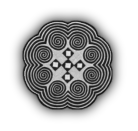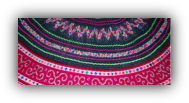
History
Culture 2
Culture 1
Kev lig kev cai (kaab lig kev cai) yog yaam kws puj ua tseg yawm ua ca hab coj siv txheej dlhau txheej tam dhau tam. Ib haiv neeg twg nyag muaj nyag kev lig kev cai ua neej. Ib raab teb twg nyag coj nyag kev lig kev cai txawv raws raab teb ntawd le luas ib txwm piv txuj lug tas "ib raab teb ib tsaa txuj." Muaj ntau hom kev lig kev cai xws le cov nyob saab nub poob "Western Culture" nwg kuj coj nwg kev lig kev cai txawv hos cov nyob saab nub tuaj "Eastern Culture" nwg kuj coj nwg txawv.
Txhua yaam tuab neeg nyag muaj nyag cev nqaj dlaim tawv zoo txawv, dlua le lawd, nyag kuj muaj nyag kev has lug, kev naav tsoog tsho, kev noj kev haus, kev ntseeg, keeb kwm caaj ceg hab ntau ntau yaam. Piv txwv le kev ntseeg, cov nyob saab Asia ntseeg kev cai Huj Saam Buddhism ntau vim yog pib tshwm sim hab nthuav tawm nyob saab Asia. Cov nyob saab Europe hab America ntseeg Christianity ntau dlua vim muaj pib tshwm sim nyob saab Eastern Miditerranean hab nthuav tawm moog rua saab Europe hab saab America. Cov nyob saab Middle East ntseeg kev cai Islam ntau.
Tej yaam nuav yog nyag muaj nyag puj koob yawm txiv coj qha lug nyag txhaj le khaws sau ca rua ntaub ntawv, teev hawm hab kawm qha txheej dlhau txheej tam dlhau tam lug moog.
Tuab neeg Moob yeej tshwm sim lug ua neej nyob nplaj teb tuab lub sij hawm le lwm haiv neeg. Moob yeej muaj kev lig kev cai zoo tsis swb lwm haiv neeg. Tab sis vim Moob tsis muaj teb chaws, moog nyob rua luas teb luas chaw ces moog hloov xyum coj luas lwm hais neeg le kev lig kev cai taag le ntau lawm.
Peb Moob yuav tsum tau paub peb caaj ceg lug le caag lug. Yaam twg yog Moob le kev lig kev cai, yaam twg yog Moob teej Moob tug hab yaam twg yog Moob puj ua tseg yawm ua ca. Txhob moog muab luas kaab lig kev cai lug coj siv hab txhob muab luas puj koob yawm koob lug ua yug puj koob yawm koob txhaj le yuav tsis nov qaab yug kaab lig kev cai. Lub neej tom ntej Moob txhaj le tseem yuav yog Moob moog ib txhis tsis hloov.
Txhua yaam tuab neeg nyag muaj nyag cev nqaj dlaim tawv zoo txawv, dlua le lawd, nyag kuj muaj nyag kev has lug, kev naav tsoog tsho, kev noj kev haus, kev ntseeg, keeb kwm caaj ceg hab ntau ntau yaam. Piv txwv le kev ntseeg, cov nyob saab Asia ntseeg kev cai Huj Saam Buddhism ntau vim yog pib tshwm sim hab nthuav tawm nyob saab Asia. Cov nyob saab Europe hab America ntseeg Christianity ntau dlua vim muaj pib tshwm sim nyob saab Eastern Miditerranean hab nthuav tawm moog rua saab Europe hab saab America. Cov nyob saab Middle East ntseeg kev cai Islam ntau.
Tej yaam nuav yog nyag muaj nyag puj koob yawm txiv coj qha lug nyag txhaj le khaws sau ca rua ntaub ntawv, teev hawm hab kawm qha txheej dlhau txheej tam dlhau tam lug moog.
Tuab neeg Moob yeej tshwm sim lug ua neej nyob nplaj teb tuab lub sij hawm le lwm haiv neeg. Moob yeej muaj kev lig kev cai zoo tsis swb lwm haiv neeg. Tab sis vim Moob tsis muaj teb chaws, moog nyob rua luas teb luas chaw ces moog hloov xyum coj luas lwm hais neeg le kev lig kev cai taag le ntau lawm.
Peb Moob yuav tsum tau paub peb caaj ceg lug le caag lug. Yaam twg yog Moob le kev lig kev cai, yaam twg yog Moob teej Moob tug hab yaam twg yog Moob puj ua tseg yawm ua ca. Txhob moog muab luas kaab lig kev cai lug coj siv hab txhob muab luas puj koob yawm koob lug ua yug puj koob yawm koob txhaj le yuav tsis nov qaab yug kaab lig kev cai. Lub neej tom ntej Moob txhaj le tseem yuav yog Moob moog ib txhis tsis hloov.

EDUCATION
KAWMTXUJ
KAWMTXUJ
HOME
TSEV
TSEV
CULTURE
KAABLIG KEVCAI
KAABLIG KEVCAI
PHOTOS
DLUAB
DLUAB
VIDEOS
YEEBYAAM
YEEBYAAM
MUSIC
YAASSUAB
YAASSUAB
NEWS
XUVXWM
XUVXWM
LINKS
TXUAS
TXUAS
BLOG
THAAMPEM
THAAMPEM
CONTACT US
NUG PEB
NUG PEB
© 2009 -
XeemKwm.com | All Rights Reserved. | Home | About | Terms Of Use | Privacy Policy | FAQ | Contact Us |
Traditions
Dlaab Tsi Qha Tau Tas Koj Yog Moob ?
| 1. | Cov lug Moob kuv has. |
| 2. | Cov tsoog tsho Moob kuv naav. |
| 3. | Cov kaab lig kev cai Moob puj ua tseg yawm ua ca kuv coj. |

| THE MIAO NATIONALITY The Miao people believe that everything in nature has a spirit, which incombination are mighty enough to control their lives. They worship their ancestors so much that memorial ceremonies are very grand. Sacrifices such as wine, meat, and glutinous rice are costly. |
| Culture include the thoughts, language, communications, actions, customs and traditions, beliefs and values, history, and social institutions of a racial, ethnic, religious or social group. It is the totality of ways of doing things that is passed on from generation to generation. In this passing down and every day practice, some features will be lost due to their selective use, and new ones replace them. Culture is thus never static, but a dynamic part of society. For the Hmong, culture can be represented through the following: * Tangible components: national musical instruments (the reed pipe or 'qeej', the Hmong flute and mouth harp), traditional costumes and ornaments, tools (the carrying basket 'kawm', Hmong hatchet and ax), house designs, preferred physical environment, arts, rituals (wedding, funeral) and written literature. * Intangible components: language, religion, shamanism, traditional music and singing, social values, norms, history, myths, folk tales, oral texts and ritual chants such as the 'Showing the Way' and the 'txiv xaiv' funeral songs, and zaj tshoob wedding songs. These visible and invisible elements can be regarded as forming the traditional Hmong culture that is found among villagers who live in the highlands of China and Southeast Asia. Much of this culture has changed for the Hmong who have settled in the West as a result of modern education, exposure to other cultures and assimilation to them, or the adoption of cultural features from other people. Source: Gary Yia Lee, Ph.D. Hmong social anthropology & community development. Read more: http://www.garyyialee.com/ More Links: Hmong Culture Center of Minnesota. http://www.hmongcc.org/ |
| Jianhe County, Guizhou Province. The date of the festival is different according to places. The ceremony is simple, unsophisticated, and distinctive and the Sister Festival in Shidong, Taijiang County on Qingshui River is the most typical one. |
| THE OLDEST VALENTINE'S DAY: THE SISTER FESTIVAL OF MIAO MINORITY GROUP. The Sister Festival, or the Sister Rice Festival, held annually by girls on the 15th day of the third lunar month, is one of the most active festivals of the Miao people in Taijiang, Shibing and |
International Conference on Hmong Studies 3HmoobTV
What is it means to be Hmong ?


